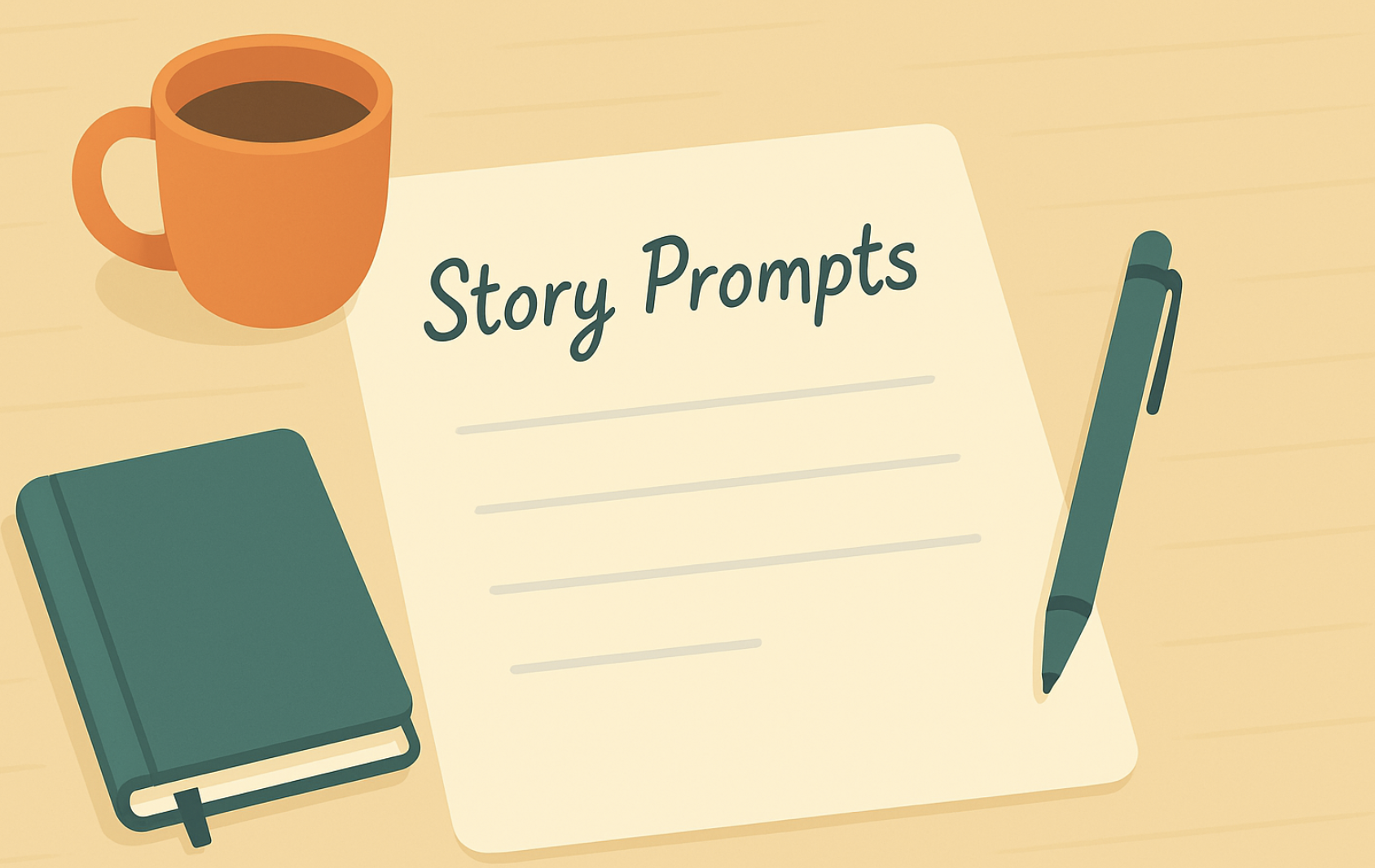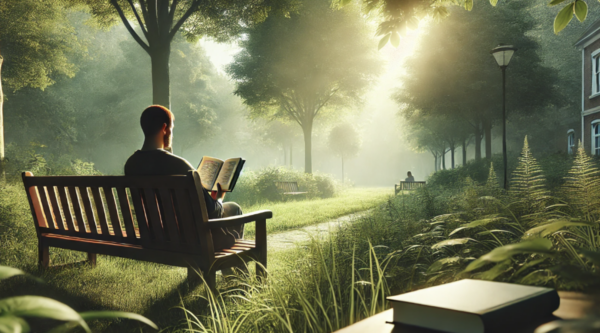Pacing in literature is like a road trip—you’ve got your stretches of open highway, where the narrative zooms ahead, and then those winding, scenic routes, where things slow down to let you take in the view. Sometimes, you’re speeding through heart-pounding action; other times, you’re pausing to savor a quiet moment of reflection. But no matter the speed, pacing always serves a purpose: it keeps the journey moving forward and ensures you don’t lose interest halfway through.
In the world of storytelling, pacing is the unsung hero that controls the rhythm of a narrative. It’s the secret ingredient that maintains narrative momentum, guiding readers through thrilling twists or emotional peaks without leaving them behind. Too fast, and they might feel whiplash; too slow, and they could start checking their watches.
So, how exactly do authors control the pace of a story? And why does it matter so much? Stick around—we’ll dive into how pacing shapes storytelling and keeps readers hooked from start to finish. Let’s hit the road!
Pacing Definition in Literature: A Closer Look
At its core, pacing in literature refers to the speed at which a story unfolds. It’s the tempo that guides how quickly or slowly events progress, influencing the way a reader experiences the plot. Whether you’re racing through an intense action sequence or lingering over a reflective moment, pacing is the engine that keeps the story moving. But more than just a matter of speed, pacing helps control the flow of time within a narrative, creating the perfect balance between momentum and pause.
The pacing definition in literature goes beyond simple timing—it’s about controlling the ebb and flow of tension. Fast pacing often creates urgency, as characters sprint toward a goal or try to escape danger. In contrast, slow pacing allows the writer to dive deep into characters’ thoughts, offer rich descriptions, or build atmosphere. Think of it like a rollercoaster: the thrilling rush of the climb contrasts with the anticipation and dread of the drop. Similarly, pacing can push readers to the edge of their seats or let them breathe in a story’s emotional depth.
Pacing also plays a crucial role in how readers emotionally engage with the story. Fast-paced moments, like a chase scene or a dramatic revelation, build excitement and suspense, making the heart race. On the other hand, slower sections—often found in quieter moments of introspection or emotional conflict—invite the reader to pause and reflect, adding layers of depth to the narrative. By manipulating pacing, authors can control the emotional highs and lows that keep readers hooked.
Different genres use pacing in varying ways. In thrillers, the pacing is typically fast and relentless—action scenes that zip by with barely a breath between them. Literary fiction, however, often employs slower pacing, allowing for deeper exploration of character motivations and philosophical themes. In some stories, the pacing might slow down significantly during a moment of revelation or reflection, giving readers time to digest and feel the weight of a character’s experience.
Take, for example, the fast-paced action of The Hunger Games, where every moment is full of tension and urgency, versus the slow, contemplative pacing of The Catcher in the Rye, which spends ample time examining Holden Caulfield’s inner turmoil. These contrasting examples highlight how pacing can set the tone of a narrative and influence the reader’s experience.
Ultimately, pacing isn’t just about moving the plot forward—it’s about shaping the reader’s emotional journey. When done right, it makes the ride worthwhile.
How Pacing Affects Narrative Momentum
Narrative momentum is the force that drives a story forward, keeping readers hooked and eager to find out what happens next. It’s the sense of continuous movement, even during moments of stillness. And pacing is the key to creating this momentum. Just like a car on a smooth road, a well-paced story builds momentum effortlessly, pulling the reader along with it. Fast-paced moments might build tension, while slower moments offer brief pauses, but the rhythm always pushes the narrative forward, creating an irresistible pull.
When pacing is dialed in just right, the reader feels like they’re on a ride that never slows down, even when the action takes a breather. This is the magic of narrative momentum. Take, for example, The Da Vinci Code by Dan Brown. The pacing keeps the story constantly in motion, with quick scene changes and cliffhangers that propel the reader to the next chapter, creating an almost relentless narrative momentum. Even the slower scenes never feel like they’re stalling—they build on the mystery and keep the tension simmering just below the surface.
On the flip side, inconsistent pacing can derail this momentum, confusing the reader and making the story feel disjointed. Imagine a thriller that suddenly drops into a lengthy, overly detailed description of a character’s childhood with no apparent connection to the plot—it interrupts the flow and saps the story of its energy. A good balance between fast-paced action and slow, introspective scenes is essential. Authors must know when to throttle up the pace for heart-pounding scenes and when to slow down for character development or reflection.
A prime example of this balance is The Girl on the Train by Paula Hawkins, which shifts between fast-paced, suspenseful moments and slower, more contemplative scenes. The pacing keeps the narrative momentum steady, maintaining a gripping flow from start to finish.
What Does an Author Use to Control the Pacing of a Story?
What does an author use to control the pacing of a story? A variety of tools! Sentence length plays a major role—short, punchy sentences speed up the action, while longer, descriptive sentences slow things down. Scene breaks, dialogue, and action scenes also influence pacing, with quick exchanges or intense moments propelling the plot forward. Beyond these, authors can manipulate pacing through structure, timing, and even point of view, adjusting how much information is revealed and when, all to maintain the ideal balance of tension and release.
Speeding Up the Action: When to Go Full Throttle
When a story hits full throttle, there’s no time to waste. Fast-paced scenes—whether it’s a high-speed chase, a sudden twist, or a life-or-death confrontation—rely on rapid pacing to generate excitement and suspense. The key to accelerating pacing lies in keeping the reader on edge. Short sentences, quick dialogue, and tightly structured scenes build that sense of urgency. The faster the sentences, the faster the reader’s heart races—think of a chase scene where every paragraph feels like a sprint.
In action-packed moments, brevity is your best friend. Short, snappy sentences keep the energy up, while rapid exchanges of dialogue can build tension and speed up the pace. The trick is to keep the action intense but clear—no lengthy descriptions or deep internal monologues to slow things down. Each sentence should feel like it’s pushing the plot forward at full speed, creating an almost breathless experience for the reader.
It’s important to know when to hit the gas pedal and when to ease off. Accelerating the pace is most effective when the stakes are high and the tension has been built up. This is where the magic happens: the reader is already invested in the characters and the plot, so speeding things up gives a burst of excitement without feeling jarring. However, pacing shouldn’t be so fast that it overwhelms the reader or makes key moments feel shallow.
Consider the heart-pounding scenes in The Hunger Games, where Katniss races through the arena, constantly dodging dangers. Or the thrilling chase in The Bourne Identity, where every moment feels like a desperate sprint. Both examples use short, fast-paced writing to accelerate the action, creating a powerful sense of urgency that keeps readers—or viewers—hooked.
Slowing Down: Why Sometimes the Story Needs a Breather
Not every moment in a story needs to be a sprint. Sometimes, the narrative needs to slow down, allowing space for reflection, character development, and emotional depth. Slow-paced scenes are often where the heart of the story lies, as they give readers time to connect with characters and fully understand their motivations. These quieter moments can be just as gripping as action-packed scenes but in a different, more introspective way.
Long descriptions, introspective passages, and deep, meaningful dialogue are the tools writers use to slow the pace. These elements allow the reader to sit with the characters and feel their emotional weight. For example, a character’s inner monologue or a moment of self-reflection might stretch the pace, but it serves to reveal essential layers of their personality, making them more relatable and real. These slower scenes give us the necessary breathing room to absorb everything we’ve learned so far and prepare us for the next burst of action.
A slower pace can also create tension, even in the absence of physical danger. As characters face emotional dilemmas or confront their past, the pacing may slow down, but this builds anticipation for how they will resolve these issues. Think of those quiet moments before a big revelation—the tension is palpable because we know something significant is about to happen, and the slower pace intensifies that feeling.
One example is the reflective scenes in The Great Gatsby, where Nick Carraway contemplates the elusive nature of the American Dream and his disillusionment with Gatsby. These slower, more thoughtful passages not only deepen the emotional impact of the story but also set the stage for the tragic conclusion, making it all the more powerful. Slower scenes, when used strategically, create lasting emotional resonance that makes the eventual payoff all the more meaningful.
Striking the Right Balance: Pacing Your Story Like a Pro
Finding the right balance between fast and slow pacing is essential for keeping readers engaged from start to finish. If a story is all action, it risks feeling exhausting and lacking emotional depth. If it’s too slow, the reader might lose interest before the payoff arrives. The key is a rhythmic ebb and flow that mirrors the story’s emotional highs and lows, ensuring there’s never a dull moment but also never an overwhelming rush.
To strike this balance, writers should switch gears deliberately—use tension to build up anticipation, cliffhangers to end chapters with a hook, and timing to let moments breathe when needed. For example, after an intense action sequence, slow things down with a reflective moment or a conversation to give the reader a chance to absorb what just happened. Likewise, a slower scene can suddenly explode into action, heightening the emotional impact and bringing the story back to life.
Different genres require different pacing strategies. In thrillers, for instance, the pacing is often relentless, with minimal breaks between fast-moving events. Literary fiction, on the other hand, may embrace a slower pace to explore complex themes or characters in greater depth. Knowing when to speed up or slow down is a skill that varies based on genre and narrative structure.
Pacing is ultimately an art form—timing, control, and an understanding of your audience’s expectations are crucial. When you master pacing, you create a narrative that’s both dynamic and satisfying, keeping readers on the edge of their seats without ever losing their emotional connection.
Pacing is the Pulse of Your Story
Pacing is the heartbeat of storytelling, pumping life into the narrative and guiding the reader through every twist and turn. It’s the secret sauce that transforms a good story into a great one, keeping the energy flowing while allowing for moments of reflection and emotional depth. Whether you’re speeding through a high-stakes chase or slowing down for an intimate revelation, pacing is your tool for creating compelling, dynamic narratives that captivate readers from start to finish.
So, embrace pacing—it’s not just a technique; it’s an art. Master it, and you’ll be the conductor of a symphony, orchestrating the rhythm of your story with precision. After all, pacing may be the unsung hero of the literary world, but every great story knows it’s the key to keeping readers hooked.
FAQs – Pacing Definition in Literature
Q1: What effect does pacing have on a poem?
Pacing in a poem controls the rhythm and flow of the verses, influencing how a reader experiences the emotions, themes, and imagery. By adjusting pacing, a poet can heighten suspense, slow down to create moments of reflection, or intensify the emotional impact. Faster pacing might convey excitement or urgency, while slower pacing can deepen meaning or evoke contemplation.
Q2: What are the two types of pacing?
The two main types of pacing are fast pacing and slow pacing. Fast pacing typically involves short sentences, rapid action, or quick dialogue to create excitement or tension. Slow pacing, on the other hand, uses longer descriptions, detailed imagery, or introspective moments to allow the reader to reflect, absorb details, or build anticipation.
Q3: How do authors use pacing to build tension in a story?
Authors manipulate pacing to build tension by alternating between fast-paced, action-packed scenes and slower, suspenseful moments. Quick pacing in a scene can escalate the stakes and create urgency, while a slow-paced scene, such as a moment of reflection or looming danger, builds anticipation. The shift in speed keeps readers on edge, heightening emotional responses and propelling the story forward.
Q4: Is my pacing too fast in my writing?
To assess if your pacing is too fast, consider whether you’re giving your readers enough time to absorb important moments. If key scenes or character development feel rushed, your pacing may be too fast. A balance of fast and slow-paced moments is crucial for maintaining reader engagement while ensuring emotional depth and understanding.
Q5: What is the pacing technique?
Pacing technique refers to the methods writers use to control the speed at which a story unfolds. Techniques include varying sentence lengths, structuring scenes for tension or relief, using dialogue and action to speed things up, and slowing the narrative with detailed descriptions or reflective moments. The pacing technique helps shape the emotional journey of the story.
Q6: What is pacing in dialogue?
Pacing in dialogue refers to how the rhythm and flow of conversation affect the story’s speed. Quick exchanges of short, snappy lines can speed up the action, while longer, more thoughtful dialogue can slow down the pace and allow for reflection or emotional depth. The pacing of dialogue can influence the overall tone and tension of the scene.








